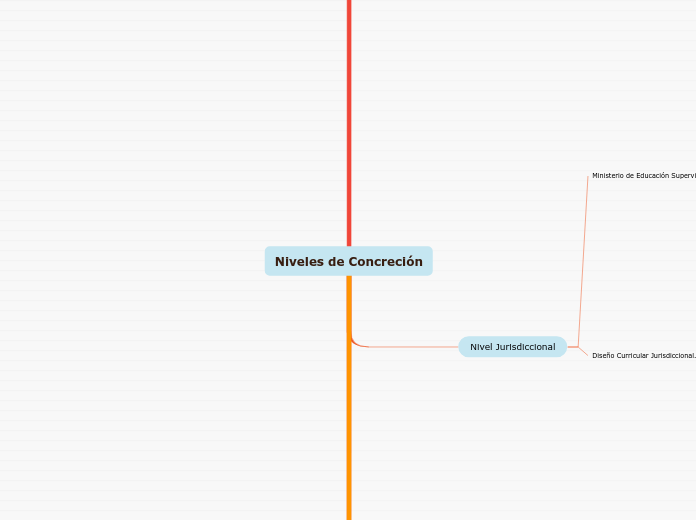af Elina Diaz 4 år siden
190
Niveles de Concreción

af Elina Diaz 4 år siden
190

Mere som dette

To name your story, you have to think about the overall message and what you want your audience to understand from the story. Also, make it relevant and easy to remember.
Conocimiento.
Alumno.
Equipo Docente.
Docente.
Selecciona y organiza las actividades de evaluación.
Organizar la planificación didáctica.
Realiza un diagnostico pedagogico.
Decisiones.
Autonomia.
Responsabilidades.
The ending of a story is essential. We all know that if the ending is weak, what happened before loses its importance. So make it unpredictable, but fair. A resolved ending answers all the questions and ties up any loose threads from the plot.
This is the closure section of the story.
See examples of possible outcomes below:
Try answering these questions in order for you to come up with a closure:
- Have all problems been solved?
- Is it clear what happens with all your characters in the story?
- Has the challenged transformed your main character?
- How do the characters feel in the end?
Try answering these questions to come up with a closure:
- Have all the problems been solved?
- Is there a clear picture of what happens with each character in the story?
- Has the challenge transformed your main character?
- How do the characters feel in the end?
This is the moment when the main character surpasses the last obstacle and finally faces their greatest challenge.
The climax usually follows one of these patterns:
Type in your answer.
The middle of the story is where you add layers of complications that will lead to the end. Reveal more about the character's journey. Did their personality go through changes? How did they overcome the challenges? And as you build up the story’s central conflict, make it more personal to that character. Also, from the middle act, you have to lead into the final act.
Your character(s) need(s) motivation in order to solve the challenge(s).
Why does your character need to confront this challenge? What does he/she expect to accomplish by solving it?
See a few examples:
Tucumán.
Formación Docente.
Educación Secundaria
Educación Primaria.
Educación Inicial.
Edades 3,4 y 5.
Contenidos para:
Practicas motrices y ludicas.
Corporeidad.
Propósitos.
Favorecer el disfrute de actividades y juegos desarrollados en cooperación con otros y en el ambiente natural.
Promover la creatividad a través de la exploración y el descubrimiento de formas personales de expresión y prácticas corporales individuales y con otros.
Enriquecer la disponibilidad motriz de los niños a partir de propuestas desafiantes, que les permitan adquirir seguridad e independencia en su accionar solo o con otros.
Desarrollar un clima de confianza y seguridad que aliente y sostenga la exploración, observación y actuación autónoma.
Secondary characters also might have motivs beacuse of which they may cross path with main character or which might trigger them to help the main character.
Evaluación.
Orientaciones.
Contenidos.
Objetivos.
Fundamentación.
Each story has a main character and that character usually needs to solve a problem or challenge. The character's challenge is the one that creates tension throughout the story.
In the beginning of the story (or the exposition), you will need to introduce the setting and characters. You might also want to introduce the main conflict. This part of the story is important because it gives the reader necessary background information and maybe even a first insight into a character’s personality.
The setting (time & place) of a story can change throughout the plot.
Sensory details include sight, sound, touch, smell, and taste. These details are important because they create depth in your setting.
See a few examples below:
Bloques
4- Contenidos actitudinales
Respeto por las reglas y las consignas.
Autoestima.
Gusto por la actividad física.
3- Juegos motores.
Promover el respeto por las reglas, la elaboración y la construcción de las mismas en forma cooperativa, integrando habilidades y destrezas en el desarrollo de juegos motores.
2- Conocimiento y dominio del cuerpo y los objetos en el ambiente.
Desarrollar habilidades y destrezas necesarias para la vida cotidiana.
Adquirir una mayor coordinación dinámica general
Cuidar el entorno.
Adquirir hábitos de higiene, cuidar su cuerpo y el de sus compañeros.
1- Conciencia corporal: imagen y percepciones.
Iniciar la aceptación y expresión desinhibida del propio cuerpo a desde de la construcción de la imagen corporal.
Los alumnos tendrán la posibilidad de:
Conocer y cuidar el entorno.
Aprender a cuidar el propio cuerpo y el de los otros.
Comunicarse y expresarse.
Desarrollar confianza en sí mismos y en sus posibilidades corporales.
Reconocer sus posibilidades y limitaciones motrices y el control progresivo del movimiento.
Tomar conciencia de las características de su cuerpo e imagen corporal.
Educación Física
Your story can take place wherever your imagination will take you to.
For example: in an elevator, in an enchanted forest, etc. Don't forget to give details of the environment each time the setting changes, otherwise, the story can be confusing. Also, mention the seasons as each of them has unique weather and events.
El logro de mayor dominio corporal resolviendo situaciones de movimiento en las que ponga a prueba la capacidad motriz.
Participación en juegos grupales y colectivos: tradicionales, con reglas preestablecidas, cooperativos.
El conocimiento de hábitos relacionados con el cuidado de la salud, de la seguridad personal y de los otros.
La exploración, descubrimiento y experimentación de variadas posibilidades de movimiento del cuerpo en acción.
Characters are essential to a good story. Usually, the protagonist(s) is/are the most affected by the plot. Introduce a character by focusing on their actions, interests, and occupation, as the physical appearance doesn't make a difference in most cases.
Type in the name of your character.